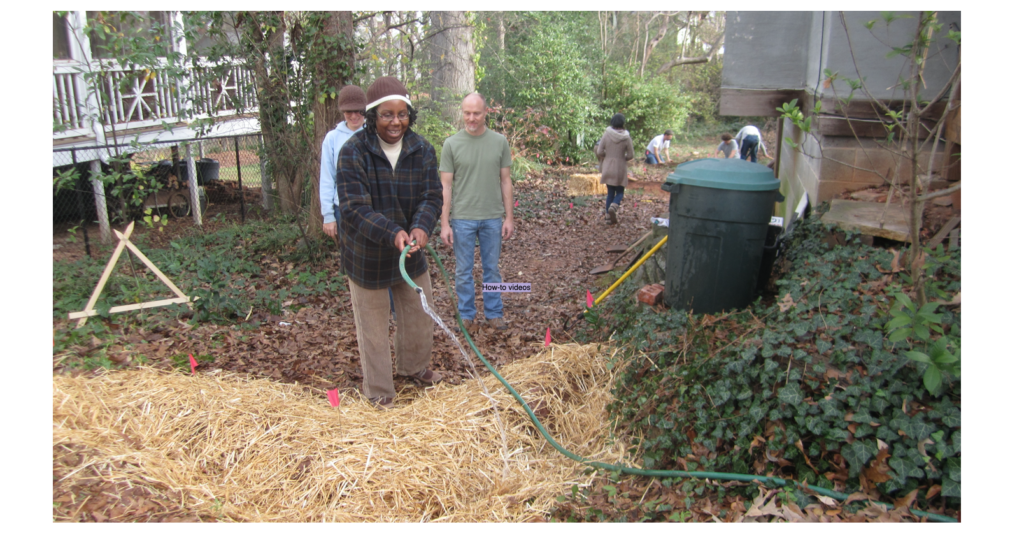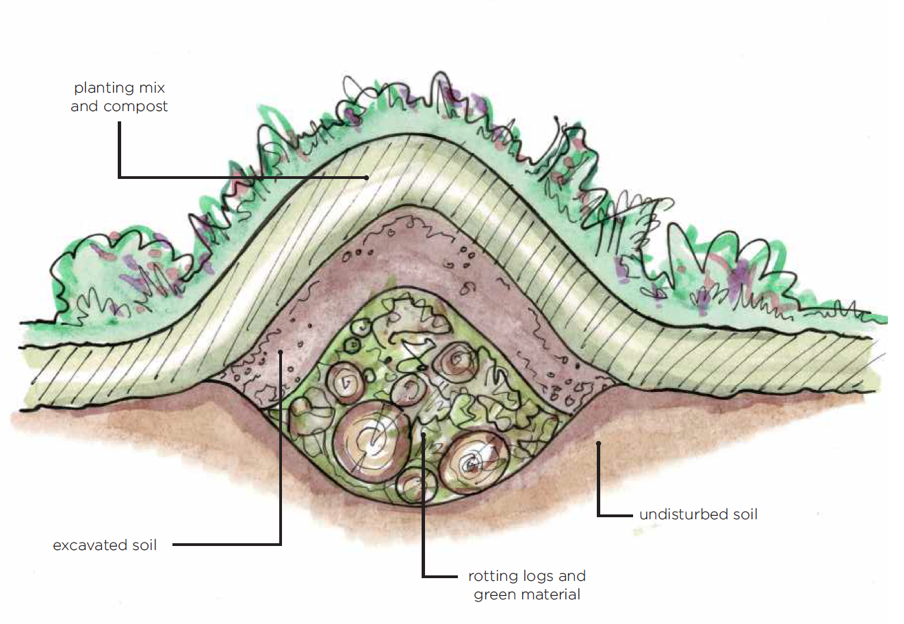
Hugelkultur, meaning growing in mounded beds, is a technique that blends water management, debris management, and soil building into one strategy. They reduce the need for irrigation because the base layer of spongy wood acts as a wick and holds moisture for the upper layers of roots to access. They are best suited for planting herbaceous layer plants, including flowers, herbs, and veggies, as they settle over time and can be unstable for the root systems of trees and shrubs. Here’s how they are made:
STEP 1
Start by digging a ditch on contour, about 2’ deep and 2’ wide. Set the excavated soil to the side. Digging the hugelbed on contour helps slow and sink water.
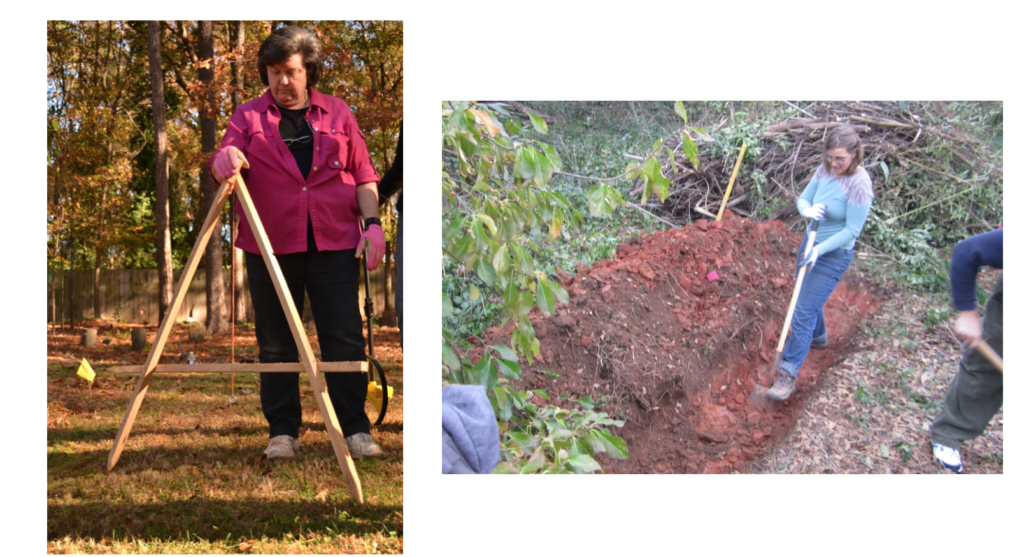 STEP 2
STEP 2
Backfill the ditch with a base layer of rotting logs and woody material. These will act as a spongy layer to hold moisture and make it available to the roots of plants.
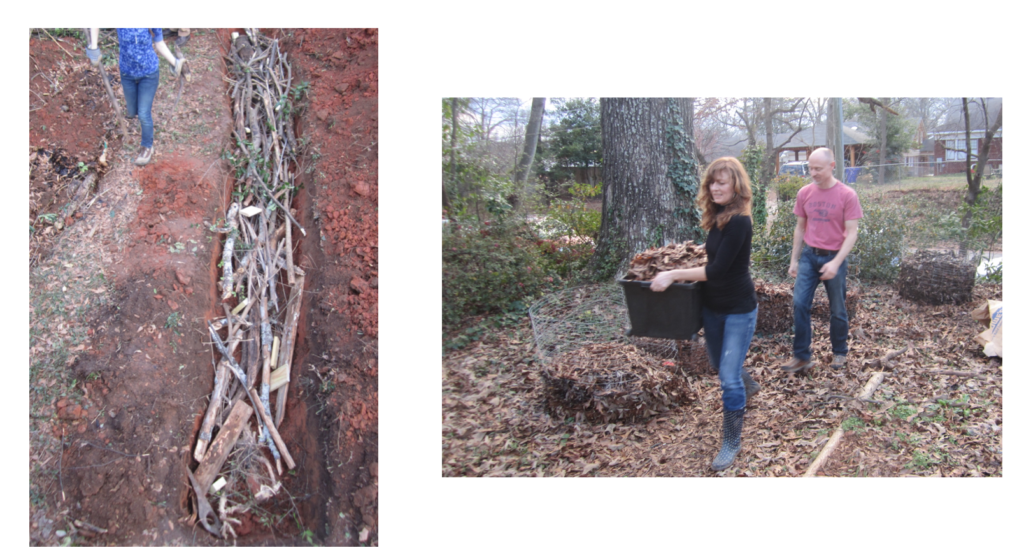 STEP 3
STEP 3
Next, add nitrogen sources, such as green yard waste, kitchen scraps, or unfinished compost. It is ok for the carbon and nitrogen layers to rise above the existing grade. The higher you make these layers, the more mounded your finished hugelbed will be.
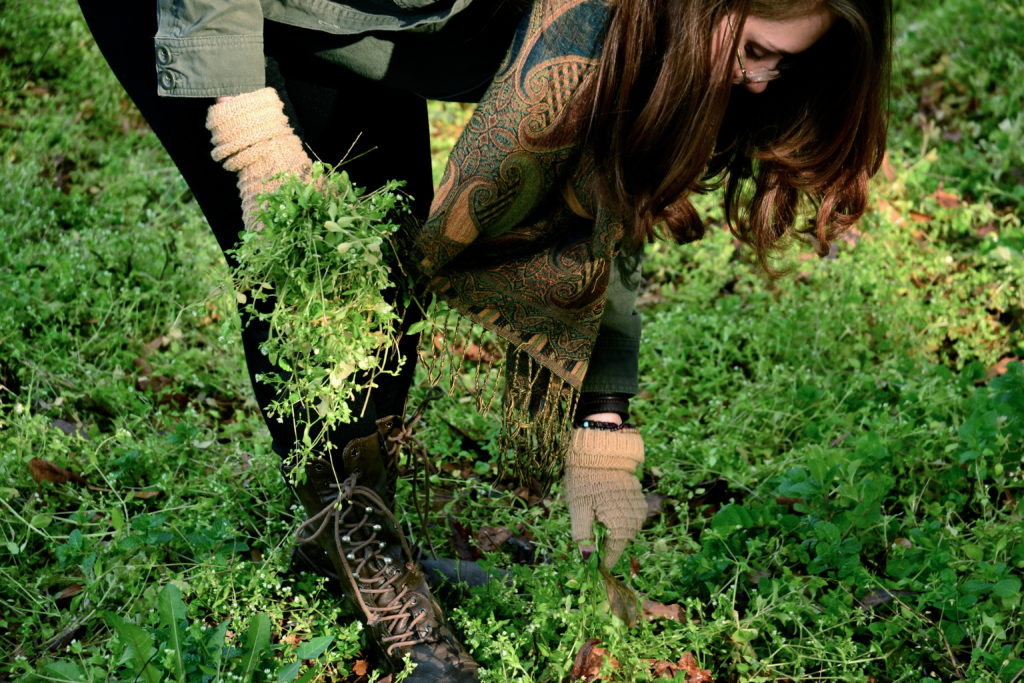
STEP 4
Cover the base layers with the soil you excavated.
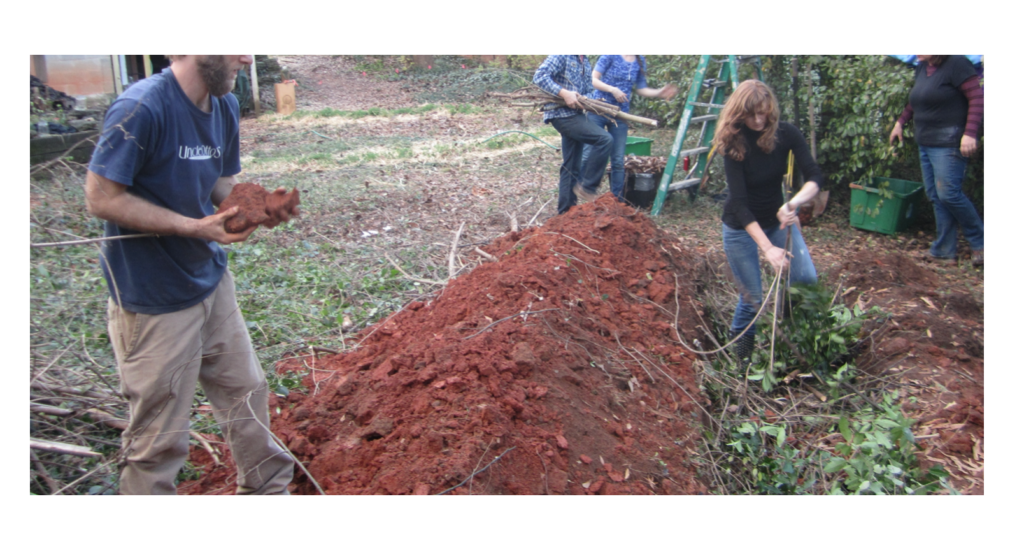
STEP 5
Add finished compost on top and overseed with your cover crop seed and cover with wheat straw. Water in the seeds, and that’s it!
